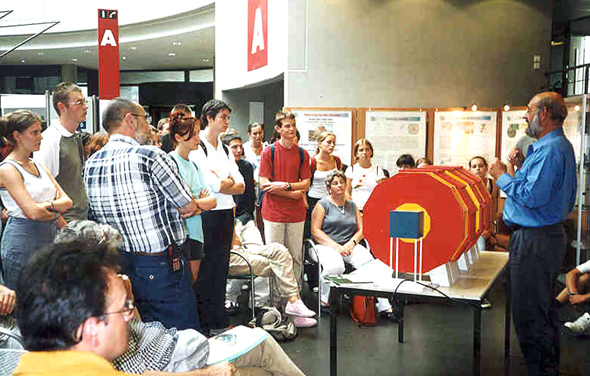A lot of events related to education occur in our society everyday, especially unreasonable events these days. Some people enroll in universities by improper way, and some teachers write exam papers instead of their students. The education system is being changed and amended continuously, but no one really thinks that there are a lot of things better than the previous education system. This leads many students to decide to study abroad. Then, what differences of education system do other countries have? The following is a brief description of the education systems of other countries.
1.China
Chinese education has 6 years of elementary education and 6 years of secondary education like Korea. Higher education requires 4 years in general universities and 6 years in medical schools or engineering schools and graduate schools require 2-3 years depending on the degree. Since the Chinese education level is relatively low, the number of Chinese undergraduates and graduates is limited. So, they are recognized as a special class that plays a role in the society as leaders.
At the moment, the Chinese university-entrance exam selects about 600 thousands people and allocate them to the universities which they applied for according to the order of their grades on the exam. Foreigners must take HSK exams to enter Chinese universities.
2.Japan
Japanese education has a 6,3,3,4 system like the Korean system, which means 6 years of elementary school, 3 years of middle school, 3 years of high school, and 4 years of university. The school year is divided into two semesters and the two semesters begin in April and October. To enter a Japanese university, people must graduate from a Japanese high school or finish 12 years of general education in other countries. If people have taken less than 12 years in other countries because of the difference of the school-year system, they must take preparation course for entering Japanese universities in a Japanese language school.

3.Australia
The Australian education system is divided into primary school, secondary school and general university or college. The school year is similar to that in Korea's. The semesters begin in February and July and each semester has 2 terms. The second semester starts in April and the fourth one in October. In Australia, there are 39 universities and 36 of them are national universities which are supported and fully managed by the federal government.
The most interesting point about Australian universities is that they are not rated in an official ranking.
4.The UK
In the UK, infant school and junior school take care of children from age 5 to 11. Then they go on to the middle education until age 16. Every student who takes middle education must take completion exams and decide whether they will stay in school to prepare for university or get a job by entering a vocational education college. Those who wish to enter general universities should finish a diploma such as A-level, AS-level, International Baccalaureate(IB), and the Access/Foundation course.
5.France

France has achieved a very rational education a long time ago. French students decide their future in middle school. Some of them remain to keep studying and others take a vocational education. By taking a vocational education like BEP and CAP, they can be specialists in the fields which are the basis of the society.
The future decision process is held again after the university entrance exam. They can go to either a high level school or a higher technique course. Through these two future decision process, 70-80% of French students become specialists who can strengthen the basis of the society and 30-40% of them choose to enter general universities or Grandes Ecoles. French universities have been equalized since the social revolution in 1968, so there is little difference between top universities and low-level universities.
6.The US
The education of the US requires 5 years of elementary school, 3 years of middle school, and 4 years of high school. Because Americans attach great importance to early education, they strive to choose good pre-schools and kindergarten. In the preparation course for university, students can choose the subjects which they want to take based on their ability and capability. If they arrange the subjects they are taking in a row, they can see what subjects they will take next year and furthermore, they can find which university they can apply for. The students who are recognized as honor students can take AP(Advanced Placement) or honor subjects.
There are about 3000 universities in the US. Students do not have to enter universities right after they graduate from high school, they can attend school whenever they think it is the right time for them to study.
Most universities in the US are focused on graduate schools. In undergraduate school, students take fundamental subjects for the first two years and they take their major courses for the other two years. People do not think that they really studied their majors for only those two years. Therefore, a lot of them enter graduate school, which takes two years.

Each country has its own education system that fits its national characteristics. This would be the reason beside the language problem that many students who study in other countries find difficulties in adapting themselves to a foreign education system and cannot gain many advantages from studying abroad.
It is no use to judge which country has a good education system or poor system, since there is no fixed criteria. However, our education must be changed in a way to satisfy students' academic wants. To achieve that, there must be changes in the fundamentals of the education system, like giving students a choice to select subjects or longer vacation so that they can experience new things other than school studies.
Also, in this era of globalization in which a lot of people go to foreign countries to study, it would be necessary for countries to adjust their education systems by reducing the differences.
By Kim So-young
International reporter

